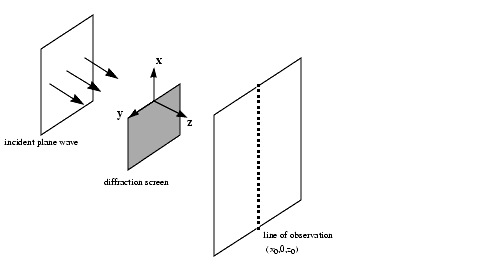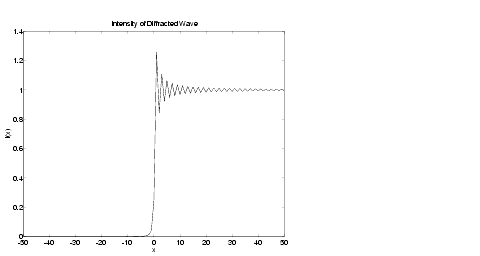

| Symbolic Math Toolbox |   |
Diffraction
This example is from diffraction theory in classical electrodynamics. (J.D. Jackson, Classical Electrodynamics, John Wiley & Sons, 1962.)

The intensity of the diffracted wave is given by


 ) and S(
) and S( ) are the Fresnel cosine and sine integrals.
) are the Fresnel cosine and sine integrals.



x = -50:50;
C = mfun('FresnelC',x);
S = mfun('FresnelS',x);
I0 = 1;
T = (C+1/2).^2 + (S+1/2).^2;
I = (I0/2)*T;
plot(x,I);
xlabel('x');
ylabel('I(x)');
title('Intensity of Diffracted Wave');
 We see from the graph that the diffraction effect is most prominent near the edge of the diffraction screen (
We see from the graph that the diffraction effect is most prominent near the edge of the diffraction screen (x = 0), as we expect.
Note that values of x that are large and positive correspond to observation points far away from the screen. Here, we would expect the screen to have no effect on the incident wave. That is, the intensity of the diffracted wave should be the same as that of the incident wave. Similarly, x values that are large and negative correspond to observation points under the screen that are far away from the screen edge. Here, we would expect the diffracted wave to have zero intensity. These results can be verified by setting
x = [Inf -Inf]in the code to calculate I.
 | Special Mathematical Functions | Using Maple Functions |  |